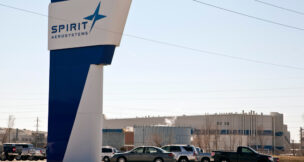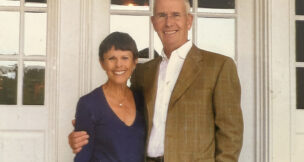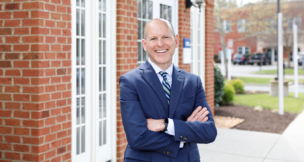Clear and present dangers
Commercial insurance rates respond to cyberattacks, weather and #MeToo
Joan Tupponce //December 2, 2019//
Clear and present dangers
Commercial insurance rates respond to cyberattacks, weather and #MeToo
Joan Tupponce //December 2, 2019//
In March, a Seattle software engineer hacked into Capital One’s servers, stealing personal data belonging to 106 million of the McLean-based bank’s customers and credit card applicants. Prosecutors would later say that the hacker was also found to possess terabytes of stolen data from 30 other organizations, including companies and universities.
Cyberattacks and data breaches such as these aren’t limited to Fortune 500 companies, however — just look at the National Bank of Blacksburg, which resolved an insurance dispute in January over the 2016-17 theft of $2.4 million by suspected Russian hackers.
According to a study released this summer by British cybersecurity firm Comparitech, Virginia ranks ninth out of the 50 states for the most data breaches. And with global financial damages attributable to cybercrimes anticipated to top $6 trillion by 2021, it’s no wonder that more and more companies are purchasing cybersecurity liability insurance.
“There’s more demand,” says Dan Knise, president and CEO of Ames & Gough Insurance/Risk Management Inc. in McLean. “The risks associated with hacking are becoming more real to businesses of all sizes. It’s unbelievable how broad it is. Small companies have the same issues as larger companies.”
Realizing they’re vulnerable to cyberattacks, “most businesses, hospitals, schools and municipalities realize they have to budget to purchase that coverage,” says Roy Bucher Jr., chairman of Lunsford, a Trustpoint Company, in Roanoke.
In fact, Baltimore’s city government announced in October that it was purchasing $20 million in cyber liability insurance — the first time it had bought such coverage. The transaction followed a widely publicized May ransomware attack that shut down or seriously disabled many city government offices and functions.
Dozens of insurers are currently writing corporate cyber coverage. As a result, premium rates are competitive but “I don’t think that will last,” Knise says. “Eventually the rates will go up, but for now it’s particularly cost effective.”
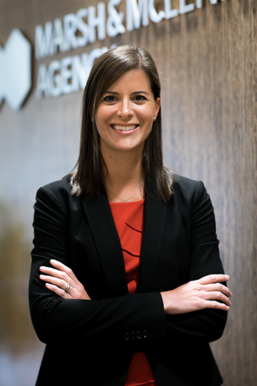
charging higher premiums to
accept emerging cyber risks related
to “fraudulent impersonation
and social engineering schemes,” says Denise Perlman of Marsh & McLennan Agency. Photo by Shandell Taylor
Insurance companies are charging higher premiums to accept emerging cyber risks related to “fraudulent impersonation and social engineering schemes,” says Denise Perlman, executive vice president for business insurance and national partnerships at Marsh & McLennan Agency in Richmond. In these schemes, a hacker sends phishing emails impersonating someone in the company in an attempt to trick the recipients into giving out private information or transferring funds.
Forecasting rates
Apart from cybersecurity coverage, 2019 is proving to be a mixed bag when it comes to commercial insurance rates. “Generally, we are seeing rates move up slightly, at a moderate level of 3% to 5%,” Knise says, adding there are exceptions to that moderate increase.
Businesses with vulnerable coastal properties and a larger risk for weather-related claims, he says, will see higher rate increases of 5% to 10%.
Weather events with multimillion-dollar damages can play havoc with insurance rates. This year Mother Nature has been kind to Virginia. September’s Hurricane Dorian was the only hurricane that barreled up the East Coast. “It didn’t do a lot of damage, and it didn’t do anything to the market,” says Bucher.
But that wasn’t the case in previous years. From 2016 to 2018, there were a historic number of billion-dollar weather disasters — hurricanes, wildfires, severe storms and droughts, according to the National Centers for Environment Information.
Verisk’s 2017 Wildfire Risk Analysis notes that losses from wildfires during the past 10 years amounted to $5.1 billion. Almost half of the homes in the U.S. identified at high risk of wildfires were in California, where this July both the Mendocino Complex Fire (the largest fire in the state’s history) and the Carr Fire (one of the state’s most destructive) occurred.
“Large property accounts with weather and brush exposures are being hit hard. In general terms, we’ve seen increases in catastrophe-prone areas with massive losses in wildfires, flood and hurricanes,” Perlman says.
Some of Bucher’s clients are also considering earthquake coverage, especially given the 5.8 magnitude earthquake that hit Louisa County in August 2011. “Some companies and historic buildings are taking out earthquake coverage,” he says. “It’s definitely something people are looking at.”
#MeToo continues
Businesses are continuing to see increasing rates for employment practices and management liability insurance. The higher rates, Knise says, are a result of the #MeToo movement and sexual harassment claims.
Since the movement to expose workplace sexual assault and harassment became more widespread in 2017, the number of claims filed due to complaints of inappropriate workplace behavior has risen. “It’s a societal shift,” Knise says.
In fiscal year 2018, the U.S. Equal Employment Opportunity Commission received 76,418 charges of workplace discrimination, including 7,609 sexual harassment charges, a 13.6% increase from FY 2017.
Claims against businesses can also be the result of traffic accidents, which are covered under a company’s business auto coverage. Companies buying business auto coverage this year are seeing rising rates. “Auto insurers are paying more and more claims with crowded highways and distracted driving,” Knise says.
Distracted driving claimed 3,166 lives in 2017. That number jumped to 4,637 in 2018, according to the National Highway Traffic Safety Administration and The Zebra, an insurance comparison site.
Losses are still outpacing “rates, making business auto coverage an unprofitable one for insurers,” says Perlman. “Carriers are reducing their capacity for the trucking market.”
Trucking insurance risks are seeing “higher increases,” whether they have had losses or have never had a loss, Perlman adds.
Many businesses are requesting higher umbrella or excess liability limits, which can supplement coverage offered by commercial auto liability insurance, general liability insurance and/or an employer’s liability insurance. The higher umbrella limits can cover issues such as property damage claims and third-party bodily injury. Large companies such as hotels may carry hundreds of millions of dollars of excess liability coverage as protection.
“This type of insurance depends on your overall insurance budget,” says Bucher.
Board member coverage
Nonprofit organizations are also scrutinizing their budgets as they recognize the need for liability insurance for the organization’s directors and officers.
“If you are serving on a board, you want to make sure the organization has D&O coverage,” says Bucher. “It protects for wrongful acts of the organization and loss from mismanagement of the organization’s board of directors.”
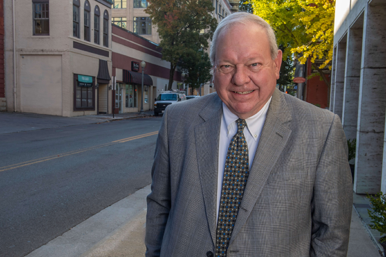
This type of insurance has become more prevalent in the last 20 years. “Now more 501(c)(3) organizations are purchasing that coverage,” Bucher says. “Many people will not serve on a nonprofit board without D&O coverage.”
Many companies today are looking at specialty coverages. For example, manufacturers and businesses with global ties are purchasing different specialty products, such as foreign liability coverage and workers’ compensation to cover employees traveling abroad to protect the company for a liability claim such as property damage or bodily injury.
Companies are also adding pollution liability coverage to protect manufacturing plants, both domestic and foreign.
Bucher is also seeing an increase in the number of Virginia businesses and businesses in other states getting commercial general liability coverage and crop insurance for farming hemp plants to guard against crop loss due to pests and natural disasters. Hemp can be used in manufacturing items such as clothing, rope and cannabidiol (CBD).
The Virginia General Assembly amended state laws this year to allow the commercial production of industrial hemp in 55 Virginia jurisdictions. Farmers no longer have to be associated with a university research program to produce hemp, a plus for the agricultural community.
Regardless of the types of insurance they carry, however, businesses always want to save money on their insurance costs. One of the key ways they can do that is to conduct safety checks each quarter and “be mindful of any issues,” says Bucher. “Owners and management of companies need to emphasize safety from the top down. If management doesn’t believe in safety, then the employees won’t either.”
Looking ahead to 2020, Knise thinks “we will see more of the same. Insurance will remain widely available,” he says. “With interest rates remaining low, however, there will be a continued focus on underwriting profit, meaning insurers will continue to increase premiums.”
<










